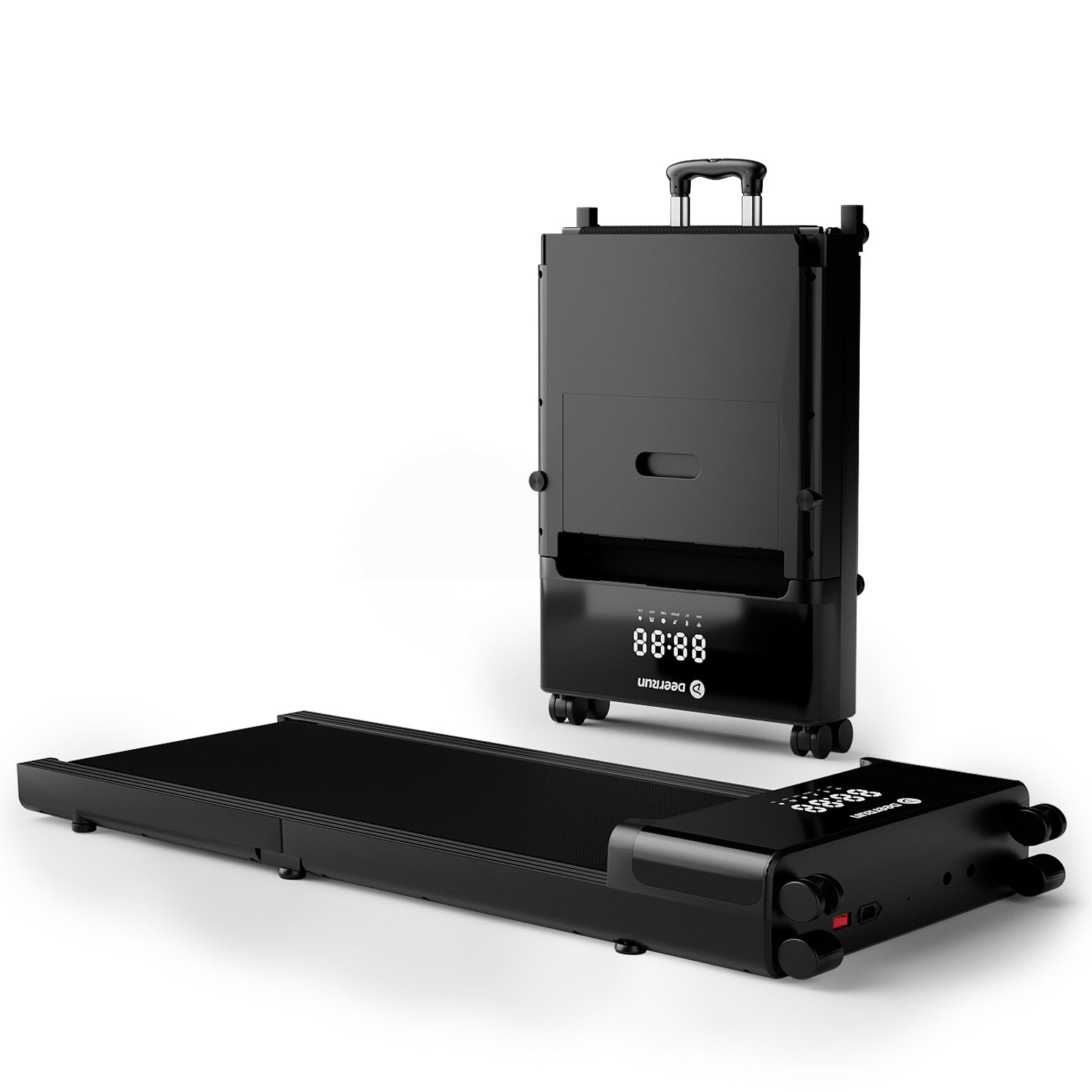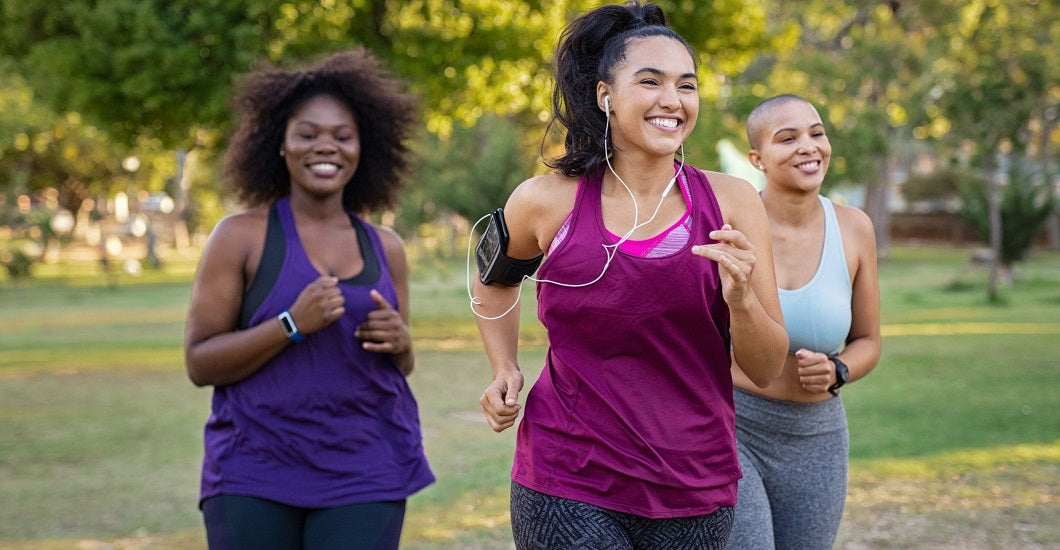In today's fast-paced world, where sedentary lifestyles and unhealthy eating habits have become the norm, the quest for effective weight loss strategies has never been more crucial. Shedding those extra pounds not only enhances our physical appearance but also plays a significant role in our overall health and well-being. One fundamental pillar of any successful weight loss journey is exercise. Engaging in physical activity not only expends calories but also brings about numerous physiological changes that facilitate weight loss.
Among the myriad of exercise options available, running has emerged as a compelling and accessible method for those seeking to shed unwanted pounds. Its simplicity and minimal equipment requirements make it an attractive choice for individuals of all fitness levels. People can run outside or run on a treadmill. Yet, many people wonder, "Does running really help you lose weight?" In this article, we will delve into the science behind running and its impact on weight loss. We will explore the benefits, practical tips, and potential pitfalls associated with running as a weight loss solution, arming you with the knowledge needed to make informed decisions on your fitness journey.
Running and Weight Loss
Explanation of the Energy Balance Equation
To understand how running can aid in weight loss, it's essential to grasp the concept of the energy balance equation. This equation is the fundamental principle behind all weight management endeavors. It states that weight change is determined by the balance between the calories consumed (in the form of food and beverages) and the calories expended (through basal metabolic rate, physical activity, and other factors).
When your caloric intake exceeds your energy expenditure, you gain weight, as the excess calories are stored as fat. Conversely, when you burn more calories than you consume, you lose weight because your body taps into those stored fat reserves for energy. Running plays a crucial role in tipping this balance in favor of weight loss, as it significantly increases your energy expenditure.
How Running Burns Calories?
Running is a high-impact aerobic exercise that engages various muscle groups and elevates your heart rate. When you run, your body requires a substantial amount of energy, primarily derived from the breakdown of carbohydrates and fats. Here's how running helps burn calories:
- Increased heart rate:
Running elevates your heart rate, leading to a higher metabolic rate during and after your run. This means you burn calories not only while running but also during the recovery period.
- Muscle engagement:
Running engages major muscle groups, such as the legs, core, and even upper body to some extent. As these muscles contract and work, they require energy, leading to calorie expenditure.
- Duration and intensity:
The longer and more intense your run, the more calories you burn. High-intensity running, such as sprinting or interval training, can be particularly effective in burning calories both during and after the workout.
- Afterburn effect:
Running can create an "afterburn" effect, known as excess post-exercise oxygen consumption (EPOC). After a challenging run, your body continues to burn calories at an elevated rate as it recovers and restores homeostasis.
Impact of Running on Metabolism
Running doesn't just burn calories during the activity itself; it can also have a lasting impact on your metabolism. Regular running can boost your basal metabolic rate (BMR), which is the number of calories your body needs to maintain basic functions at rest.
Muscle tissue plays a key role in this process. As you engage in regular running, you build and tone muscles. Muscles require more energy to maintain than fat tissue, so the more muscle you have, the higher your BMR. This means you'll burn more calories even when you're not running, contributing to sustainable weight loss.
In conclusion, running is a powerful tool for weight loss as it helps create a calorie deficit by burning calories during exercise and enhancing your metabolism over time. Understanding the energy balance equation, the calorie-burning mechanisms of running, and its impact on metabolism can empower you to use running effectively in your weight loss journey.

Running vs. Other Exercises for Weight Loss
Comparing Running to Other Forms of Cardio
When it comes to weight loss, cardiovascular exercises, often referred to as cardio, play a pivotal role. Running is just one option among many, and understanding how it compares to other forms of cardio can help you choose the right exercise for your fitness goals. Let's explore the pros and cons of running in comparison to other cardio exercises:
- Running vs. Walking:
Running burns more calories per minute than walking due to the higher intensity.
Walking is lower impact and generally more accessible for beginners and individuals with joint issues.
- Running vs. Cycling:
Running generally burns more calories per unit of time compared to cycling.
Cycling is gentler on the joints and may be a better option for those with joint pain or injuries.
- Running vs. Swimming:
Swimming provides a full-body workout and is low-impact on joints.
Running is more convenient for most people as it doesn't require access to a pool.
- Running vs. High-Intensity Interval Training (HIIT):
HIIT workouts can burn a significant amount of calories in a short time.
Running can be a component of HIIT workouts, combining the benefits of both steady-state cardio and high-intensity intervals.
Strengths and Weaknesses of Running for Weight Loss
Strengths of Running for Weight Loss:
- High Caloric Burn:
Running is an excellent calorie burner, making it efficient for weight loss.
- Versatility:
You can run outdoors, on a treadmill, or even participate in organized races, providing flexibility in your fitness routine.
- Mental Health Benefits:
Running can reduce stress and improve mental well-being, which can indirectly support weight loss by reducing emotional eating.
Weaknesses of Running for Weight Loss:
- High Impact:
Running can be tough on the joints, potentially leading to injuries, especially for beginners or those with existing joint problems.
- Time-Consuming:
Longer runs may be required to burn a significant number of calories, which can be time-consuming.
- Plateaus:
Over time, your body may adapt to running, leading to weight loss plateaus. Varying your running routine can help mitigate this.
In summary, running is a highly effective cardio exercise for weight loss, but it may not be suitable for everyone due to its high-impact nature. When choosing the right exercise for weight loss, consider your fitness level, any existing injuries or limitations, and your personal preferences. Combining different forms of cardio or incorporating running into a well-rounded fitness routine can also be a strategic approach to maximize weight loss and overall fitness benefits.

Running for Weight Loss: Safety Precautions
Importance of Proper Running Form
Proper running form is not just about looking good; it's a critical aspect of preventing injuries and maximizing the effectiveness of your weight loss efforts. Here's why it's essential:
- Injury Prevention:
Running with improper form increases the risk of injuries, particularly to the knees, hips, and lower back. Over time, these injuries can derail your weight loss progress.
- Efficiency:
Good form allows you to run more efficiently, meaning you'll use less energy and be able to run longer or faster. This can lead to more calories burned during your workouts.
- Reduced Discomfort:
Proper form minimizes discomfort during and after runs, making it more likely that you'll stick with your running routine.
To maintain proper form while running:
- Posture:
Keep your back straight and shoulders relaxed.
- Arms:
Swing your arms naturally, keeping them close to your body.
- Footstrike:
Land on the midfoot or forefoot rather than the heel to reduce impact.
- Cadence:
Aim for a cadence (steps per minute) of around 170-180 to reduce the risk of overstriding.

Avoiding Overtraining and Burnout
Overtraining and burnout are real concerns for runners, especially those motivated to lose weight quickly. Here's how to avoid these pitfalls:
- Gradual Progression:
Don't push yourself too hard too quickly. Start with manageable distances and gradually increase your mileage to allow your body to adapt.
- Rest Days:
Rest days are essential for recovery. Your muscles need time to repair and grow stronger. Plan rest days into your running schedule.
- Cross-Training:
Incorporate cross-training activities like swimming, cycling, or yoga to reduce the strain on your running muscles and prevent overuse injuries.
- Listen to Your Body:
Pay attention to signs of overtraining, such as persistent fatigue, soreness, decreased performance, or mood changes. If you notice these signs, take extra rest or reduce your training intensity.
- Nutrition and Hydration:
Proper nutrition and hydration are crucial for recovery and performance. Ensure you're fueling your body with the right nutrients and staying adequately hydrated.
- Sleep:
Get enough quality sleep. Sleep is when your body repairs and regenerates, and it plays a vital role in preventing burnout.
- Variation:
Vary your running routine by including different types of runs, such as intervals, tempo runs, and long, slow runs. This prevents monotony and reduces the risk of burnout.
- Set Realistic Goals:
While it's great to have weight loss goals, set them realistically. Rapid weight loss through excessive running can lead to burnout and is not sustainable.
By focusing on proper form and avoiding overtraining, you can enjoy the benefits of running for weight loss while minimizing the risk of injuries and burnout, making your fitness journey safer and more sustainable.
Conclusion
In summary, running does indeed hold great potential as a weight loss solution. It burns calories, enhances metabolism, and offers a myriad of physical and mental health benefits. However, it's important to recognize that running is not a one-size-fits-all approach. Its high-impact nature may not be suitable for everyone, and incorporating other forms of exercise or cross-training can be a wise choice.





























Leave a comment
All comments are moderated before being published.
This site is protected by hCaptcha and the hCaptcha Privacy Policy and Terms of Service apply.